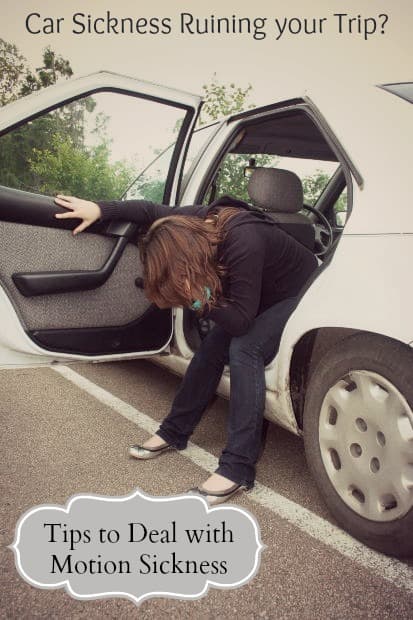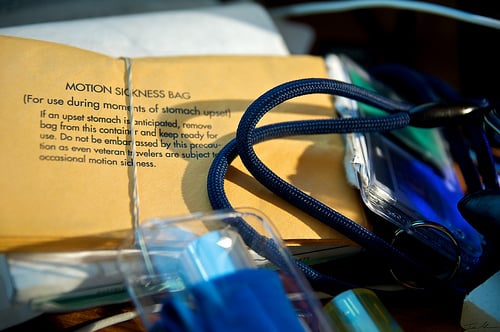Do you worry about traveling because you suffer from motion sickness? It is possible to reduce motion sickness symptoms and even prevent them.

Know the symptoms
Nausea and vomiting are the best known motion sickness symptoms. They are usually preceded by feelings of discomfort accompanied by pallor of the skin, especially around the mouth, and cold sweat. Other people will yawn, suffer from a frontal headache, drowsiness, hyper salivation, or will breathe quickly.
Know the causes
Classically, motion sickness occurs when your body feels a motion your eyes did not detect. This is the case when, for instance, you are in a car. The mode of transportation has an influence on motion sickness incidence. The risk of inducing motion sickness is higher for a cruise than for a trip by car or by plane. The train is the mode of transportation that induces it the least.Most people get used to the contrast between what their eyes perceive and what their body feels. Motion sickness is much less common after a repeated exposure to the same stimulus. This is why car-related motion sickness is generally met only in children. People who travel by plane for the first time are also more at risk to suffer from motion sickness than those who fly for a second time or even often.
Tips to reduce or prevent motion sickness:

- Stare at a fixed point of the panorama. If you travel by car, look out the window and fix the horizon. For children, use a booster seat so they are able to look through the window more easily. If possible, drive or choose the front seat.
- Play observation games by looking outside.
- Do not read, do not even flip through a magazine.
- Ask the driver to take the curves smoothly.
- Open the windows to breathe fresh air.
- If you travel by boat, stay as often as possible on the bridge to be able to scan the horizon. Choose a room with as little turbulence as possible that is at the center of the boat. Consider using a natural remedy to help with your seasickness.
- In a plane, avoid choosing a seat at the back of the aircraft.
- When seated, lean your head against the headrest to prevent brisk movements. If possible, lie down.
- Take frequent pauses during which you will be active. Get out of the car and take a walk, even run.
- Never travel on an empty stomach. Fasting will not avoid the symptoms, on the contrary. On the other hand, avoid excess of food and alcohol at least two hours before departure. The strong smell of food entices nausea. Instead of eating In the car, take a break and go out.

